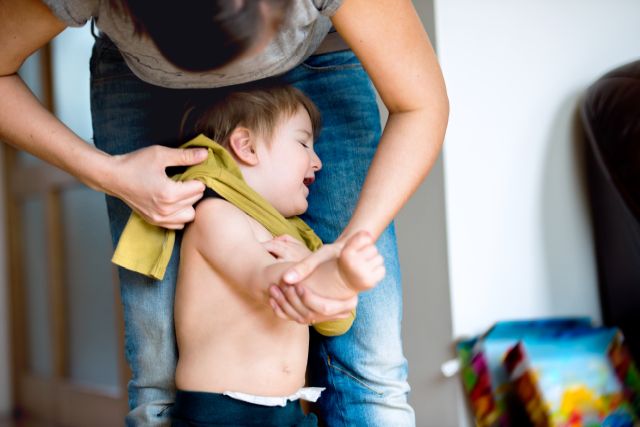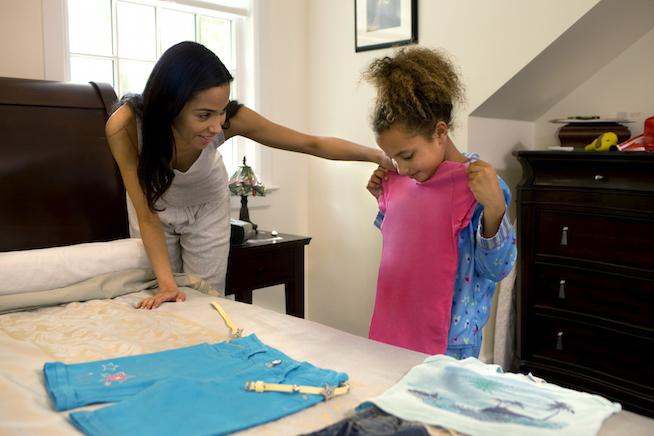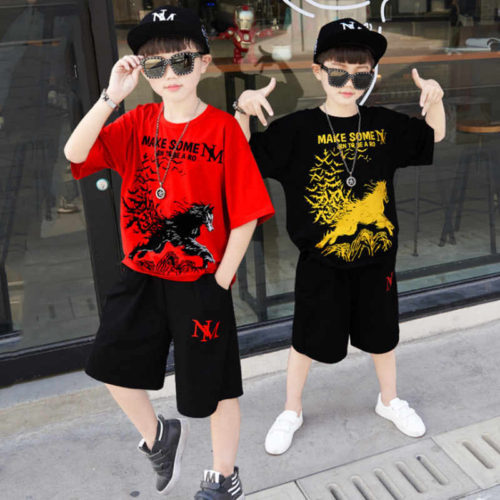Children sometimes refuse to wear clothes. This can confuse or worry parents.
Understanding why your child doesn’t like wearing clothes is important. It might be due to sensory issues, personal preferences, or even health conditions. Some kids find certain fabrics uncomfortable. Others might feel too hot or too cold. It’s also possible that they are expressing independence.
Knowing the reasons can help you address the issue better. In this blog post, we will explore different reasons and offer tips to help your child feel more comfortable. By understanding your child’s needs, you can make clothing a more pleasant experience for both of you. Stay tuned to learn more and find solutions.
Sensory Sensitivities
Some children have strong reactions to clothing. These reactions often stem from sensory sensitivities. Sensory sensitivities mean a child’s brain processes sensory information differently. This can make certain textures, sounds, or even smells overwhelming. Clothing can feel uncomfortable or unbearable to them.
Signs Of Sensory Issues
Recognizing sensory issues early is important. Children with sensory sensitivities may show specific signs. They might refuse to wear certain fabrics. They may avoid tags and seams. Some children dislike tight or loose clothing. They may also resist changes in clothing. Pay attention to these behaviors.
Common Triggers
Several factors can trigger sensory sensitivities in children. Rough fabrics can feel like sandpaper. Tight clothing can feel like a constant hug. Loose clothing might be irritating. Tags and seams can cause itching or pain. Even the temperature of clothing can be a trigger. Knowing these triggers can help you understand your child better.

Credit: everymum.ie
Comfort Preferences
Many children have specific comfort preferences that affect their clothing choices. These preferences can stem from various factors like fabric type, temperature, and personal likes and dislikes. Understanding these aspects can help parents address their child’s clothing issues effectively.
Fabric Choices
Children often have strong preferences for certain fabrics. Some materials may feel scratchy or rough against their skin. Soft, breathable fabrics like cotton are usually more comfortable. Synthetic fabrics can sometimes cause irritation. Pay attention to your child’s reactions to different materials. Choosing the right fabric can make a big difference.
Seasonal Comfort
The weather plays a significant role in a child’s comfort. During summer, lightweight and airy clothing helps keep them cool. In winter, warm and cozy layers are essential. Children may resist clothes that feel too hot or too cold. Dress them in season-appropriate clothing to ensure comfort.
Observe how your child reacts to different temperatures. Adjust their wardrobe accordingly. This simple step can improve their comfort and willingness to wear clothes.
Developmental Stages
Understanding the developmental stages of your child is crucial. It helps explain why they may resist wearing clothes. Children go through various phases as they grow. Each stage comes with its own set of behaviors and challenges. By knowing these stages, parents can better address their child’s needs and preferences.
Age-related Behavior
Children’s behavior changes as they age. Young children, especially toddlers, are developing their sense of independence. They may refuse clothes to assert their autonomy. They may also dislike the sensation of certain fabrics or tags.
Preschoolers might resist clothing for different reasons. Some dislike the feeling of being restricted. Others might find certain clothes too tight or too loose. Understanding these age-specific behaviors can help parents choose more comfortable clothing options.
Growth Milestones
Each growth milestone brings new challenges. Infants and toddlers are learning about their bodies. They might resist clothes as they explore their environment. Sensory experiences are new to them. Clothes can sometimes feel overwhelming.
Consider these key growth milestones:
- 0-12 months: Babies react to different textures. They may cry if clothes feel uncomfortable.
- 1-3 years: Toddlers assert independence. They may refuse clothes to feel in control.
- 3-5 years: Preschoolers start having preferences. They may choose clothes based on comfort.
By recognizing these milestones, parents can better understand and address their child’s clothing preferences. This knowledge helps in selecting the right clothes that suit their developmental needs.

Credit: www.coordikids.com
Behavioral Patterns
Understanding why your child dislikes wearing clothes can be challenging. Behavioral patterns often play a significant role. Children express their feelings and preferences through their actions. Recognizing these patterns can help you address the issue effectively.
Routine Resistance
Many children resist routines. Wearing clothes is part of their daily routine. They may view it as a chore. This resistance can stem from a desire to maintain control. They want to dictate their own schedule. This is common in young children. It’s their way of asserting independence.
Creating a fun routine can help. Turn dressing into a game. Make it enjoyable. This can reduce resistance and make the process smoother. It also helps to give them choices. Let them pick their outfit. This gives them a sense of control.
Independence Assertion
Children often assert their independence. Not wearing clothes is a way to do this. It’s a form of self-expression. They are learning to make decisions. They want to feel in control of their body. This is a natural part of development.
Encourage this independence in a positive way. Offer them options. This can help them feel empowered. Guide them gently. Explain why wearing clothes is important. Use simple, clear language. This can help them understand and accept the need for clothes.
Health Concerns
Health concerns can play a significant role in why children dislike wearing clothes. Understanding these issues can help parents address the root cause. Let’s explore some common health-related reasons.
Skin Conditions
Skin conditions like eczema or psoriasis can make wearing clothes uncomfortable. These conditions cause itching, redness, and irritation. Clothes rubbing against the skin can worsen these symptoms. This discomfort may lead to a child’s aversion to clothing.
Allergies
Allergies to certain fabrics or laundry detergents can cause distress. Synthetic materials or harsh chemicals can irritate sensitive skin. Children with these allergies may find clothes itchy or painful. Identifying and eliminating the allergen can improve the situation.
Psychological Factors
Children refusing to wear clothes can be frustrating. Many parents face this challenge. Understanding the psychological factors behind this can help. Below, we explore key elements like anxiety and emotional responses.
Anxiety And Stress
Children experience anxiety and stress like adults. Wearing clothes might trigger these feelings. The texture of certain fabrics can cause discomfort. Tight clothing might feel like a trap. This can lead to anxiety.
In some cases, children link clothing to stressful events. For example, a child might associate school uniforms with bullying. This association creates stress. They might refuse to wear the uniform to avoid these feelings.
Emotional Responses
Emotional responses play a big role. Children express emotions through their actions. Refusing to wear clothes can be an expression of control. It gives them a sense of power.
Sometimes, children have sensory sensitivities. These can cause strong emotional reactions to certain fabrics. They might prefer soft, loose clothes. This is because they feel more comfortable and secure.
Table below shows common emotional triggers:
| Trigger | Emotional Response |
|---|---|
| Scratchy fabric | Discomfort and irritation |
| Tight clothing | Feeling trapped and anxious |
| School uniforms | Stress and avoidance |
Understanding these triggers can help parents. They can choose more comfortable clothing options. This can reduce the child’s stress and emotional responses.
Parenting Techniques
Every child is unique. Some children dislike wearing clothes. This can be challenging for parents. Using the right techniques can help. Here are some effective parenting techniques.
Positive Reinforcement
Positive reinforcement encourages good behavior. Praise your child for wearing clothes. Use a cheerful tone. Offer small rewards. Stickers or extra playtime work well. Make dressing fun. Create a positive association with clothes. Consistency is key.
Setting Boundaries
Children need clear boundaries. Explain why wearing clothes is important. Use simple language. Set specific rules. For example, no clothes mean no going outside. Be firm but gentle. Consistency helps children understand expectations. Follow through with consequences if needed. This teaches responsibility.
Expert Advice
Expert advice can be incredibly helpful when trying to understand why your child dislikes wearing clothes. Professionals can offer insights and practical solutions. This section will cover two key areas of expert advice: consulting pediatricians and therapeutic approaches.
Consulting Pediatricians
A pediatrician can assess if there are any underlying medical issues. They can evaluate sensory processing disorders. These disorders can make wearing clothes uncomfortable for children.
Pediatricians can also check for skin conditions. Eczema or other rashes can cause discomfort. Sometimes, a child might resist clothes due to these issues.
Here is a table summarizing reasons and solutions:
| Reason | Solution |
|---|---|
| Sensory Processing Disorder | Occupational therapy, sensory-friendly clothing |
| Skin Conditions | Medicated creams, loose cotton clothing |
Therapeutic Approaches
Therapists can use various techniques to help children adapt to wearing clothes. Occupational therapists are skilled in helping children with sensory issues.
They might suggest using sensory-friendly clothing. These clothes have no tags or rough seams. This makes them more comfortable for sensitive skin.
Behavioral therapists can also help. They use positive reinforcement to encourage wearing clothes. This can make the child feel rewarded and motivated.
- Gradual exposure to different types of clothing
- Creating a routine that involves dressing
- Using reward systems for wearing clothes
Both pediatricians and therapists offer valuable insights. Their expert advice can make a significant difference.
Practical Solutions
Parents often wonder why their child dislikes wearing clothes. Sensory issues, preferences, or developmental stages can be reasons. Luckily, there are practical solutions to help your child feel comfortable in clothing.
Adaptive Clothing
Adaptive clothing can be a game-changer. These clothes are designed with comfort in mind. Look for tagless shirts or pants with elastic waistbands. Soft fabrics like cotton can also help. Adaptive clothing reduces sensory overload.
Gradual Introduction
Introduce clothing gradually to your child. Start with short periods. Allow your child to choose their clothes. This gives them a sense of control. Praise them when they wear clothes. Positive reinforcement works wonders.
Make dressing a fun activity. Use games or songs. Gradual introduction helps your child get used to wearing clothes. Patience and consistency are key. Every child is different. Find what works best for yours.
Environmental Factors
Understanding why your child dislikes wearing clothes can be challenging. One significant aspect to consider is environmental factors. These factors can greatly influence a child’s comfort and willingness to wear clothes. Let’s explore some of these factors in detail.
Home Environment
The home environment plays a crucial role. Children may feel more relaxed and secure at home. This comfort can make them prefer being unclothed. The temperature of the home also matters. If it is too warm, wearing clothes can be uncomfortable.
Family habits also impact a child’s clothing preferences. If family members dress casually or minimally at home, children may follow suit.
School And Social Settings
Outside the home, school and social settings influence a child’s attitude towards clothes. At school, children may feel pressure to dress like their peers. This pressure can either encourage or discourage them from wearing certain clothes.
Social events and gatherings also matter. Some children might feel anxious in social settings, making them uncomfortable in clothes they are not used to.
Observing and understanding these environmental factors can help parents address their child’s clothing preferences effectively.
Interactive Activities
Interactive activities can help your child feel more comfortable wearing clothes. These activities make the process fun and engaging. They can also help address any sensory issues your child may have. Below are some interactive activities to try.
Play-based Learning
Play-based learning can make dressing up enjoyable. Use dolls or action figures to dress and undress. This allows your child to see dressing as a fun activity. You can also play dress-up games with your child. Let them choose outfits for both of you. This gives them a sense of control and makes the activity less stressful.
Sensory Integration Games
Sensory integration games can help your child get used to different textures. Use soft, smooth, and rough fabrics to create a sensory bin. Let your child explore these fabrics with their hands. This helps them get used to different textures in a safe environment. Another idea is to create a ‘dress-up relay.’ Lay out clothes of different textures. Your child can run to pick up an item, put it on, and then run back. This makes the process of dressing up exciting and less daunting.

Credit: www.ravishly.com
Clothing Alternatives
Is your child not fond of traditional clothing? Many children have sensory issues or simply prefer other options. Finding alternatives can help make them feel more comfortable and happy. Let’s explore some creative clothing alternatives.
Non-traditional Attire
Some children feel restricted by traditional clothes. They might enjoy looser, unstructured clothing like ponchos or capes. These allow more freedom of movement. Consider oversized shirts or dresses that don’t cling to the body. These types of attire can reduce discomfort and make dressing more fun.
Another option is to look at different fabrics. Some children prefer soft, breathable materials like cotton or bamboo. Avoid materials that are scratchy or stiff. Experiment with various textures to see what your child prefers.
Comfort Accessories
Comfort accessories can make a big difference. Try using soft, elastic waistbands instead of tight belts. Look for seamless socks to avoid irritation. Some children may prefer clothing with fewer buttons or zippers.
Consider adding layers that are easy to remove. Soft scarves or shawls can provide comfort without feeling restrictive. Hooded blankets or wearable blankets are also cozy options. These alternatives allow your child to stay comfortable while still covering up.
Comfort accessories can transform the dressing experience. They can help your child feel secure and happy in their clothes.
Community Support
Understanding why your child dislikes wearing clothes can be challenging. Community support can provide much-needed guidance and reassurance. Many parents face similar struggles, and connecting with them can be invaluable.
Support Groups
Support groups offer a safe space to share experiences. Parents can discuss concerns and receive advice. Many local communities have in-person support groups. These meetings create a sense of belonging. Parents find comfort in knowing they are not alone.
Online Resources
Online resources are abundant and easily accessible. Websites and forums dedicated to parenting provide useful information. Parents can find articles, blogs, and videos addressing clothing sensitivity. Many online communities offer forums for discussion. Joining these can help parents connect globally and gain insights.
Frequently Asked Questions
Why Does My Child Dislike Wearing Clothes?
Many children find clothes uncomfortable. They might not like the texture or fit. Sensory issues can also be a reason.
Is It Normal For Kids To Refuse Clothes?
Yes, it’s common. Many children go through phases where they dislike clothes. It’s a part of their development.
How Can I Make My Child Wear Clothes?
Try soft, loose-fitting clothes. Let them choose their outfits. This gives them control and may help.
Could Sensory Issues Cause Clothing Problems?
Yes, sensory sensitivities can make children reject certain fabrics or fits. They may find some clothes irritating.
When Should I Worry About My Child Not Wearing Clothes?
Consult a doctor if refusal affects daily life or social interactions. It might be linked to deeper issues.
Conclusion
Understanding why your child dislikes wearing clothes can be challenging. Address sensory issues and preferences. Observe their reactions. Offer choices in fabrics and styles. Patience and empathy are key. Encourage them gently. Experiment with different clothing options. Create a comfortable, supportive environment.
Consult a specialist if needed. Every child is unique. Respect their comfort levels. Celebrate small victories. Building trust takes time. Parents’ support is crucial. Help them feel secure and confident. Remember, it’s a learning process for both. You are not alone in this journey.




